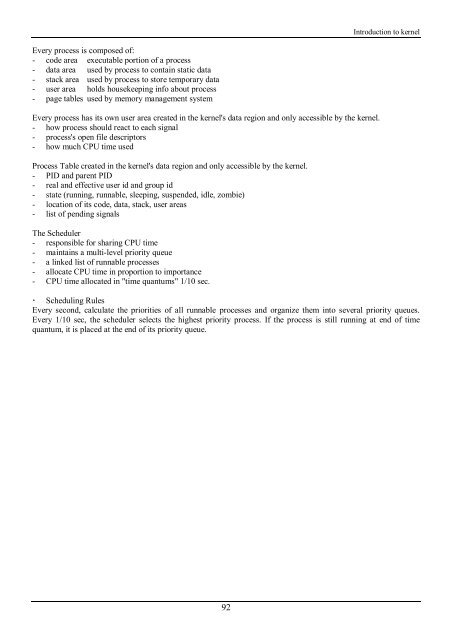Create successful ePaper yourself
Turn your PDF publications into a flip-book with our unique Google optimized e-Paper software.
Introduction to kernel<br />
Every process is composed of:<br />
- code area executable portion of a process<br />
- data area used by process to contain static data<br />
- stack area used by process to store temporary data<br />
- user area holds housekeeping info about process<br />
- page tables used by memory management system<br />
Every process has its own user area created in <strong>the</strong> kernel's data region and only accessible by <strong>the</strong> kernel.<br />
- how process should react to each signal<br />
- process's open file descriptors<br />
- how much CPU time used<br />
Process Table created in <strong>the</strong> kernel's data region and only accessible by <strong>the</strong> kernel.<br />
- PID and parent PID<br />
- real and effective user id and group id<br />
- state (running, runnable, sleeping, suspended, idle, zombie)<br />
- location of its code, data, stack, user areas<br />
- list of pending signals<br />
The Scheduler<br />
- responsible for sharing CPU time<br />
- maintains a multi-level priority queue<br />
- a linked list of runnable processes<br />
- allocate CPU time in proportion to importance<br />
- CPU time allocated in "time quantums" 1/10 sec.<br />
! Scheduling Rules<br />
Every second, calculate <strong>the</strong> priorities of all runnable processes and organize <strong>the</strong>m into several priority queues.<br />
Every 1/10 sec, <strong>the</strong> scheduler selects <strong>the</strong> highest priority process. If <strong>the</strong> process is still running at end of time<br />
quantum, it is placed at <strong>the</strong> end of its priority queue.<br />
92
















